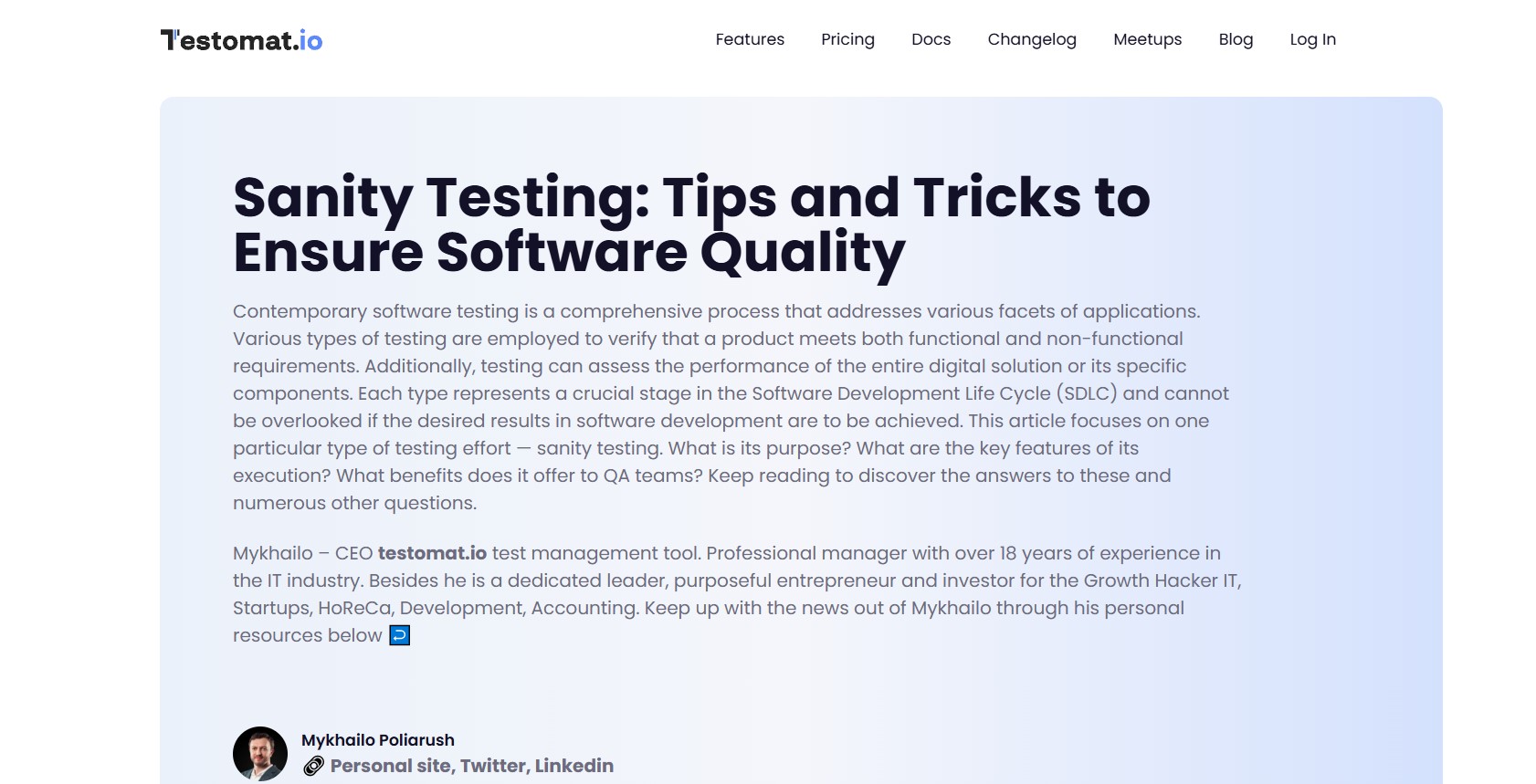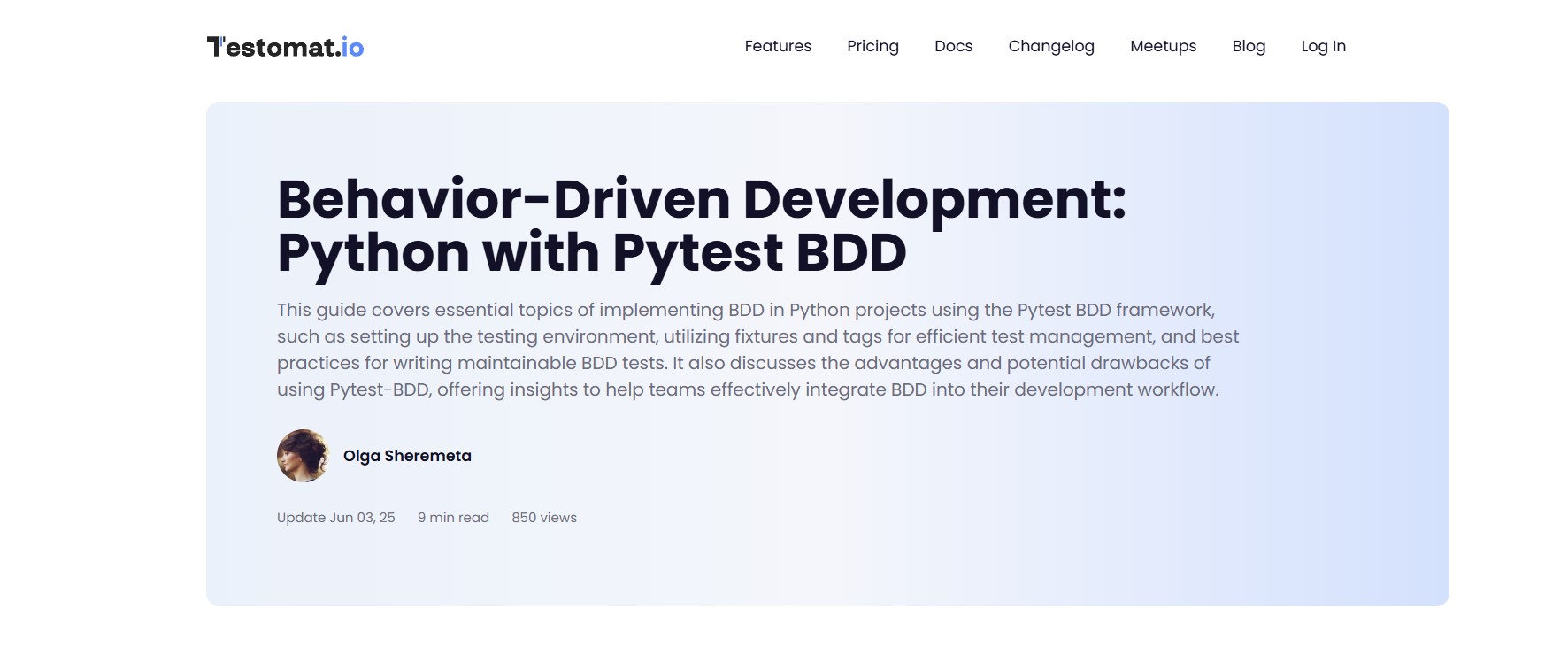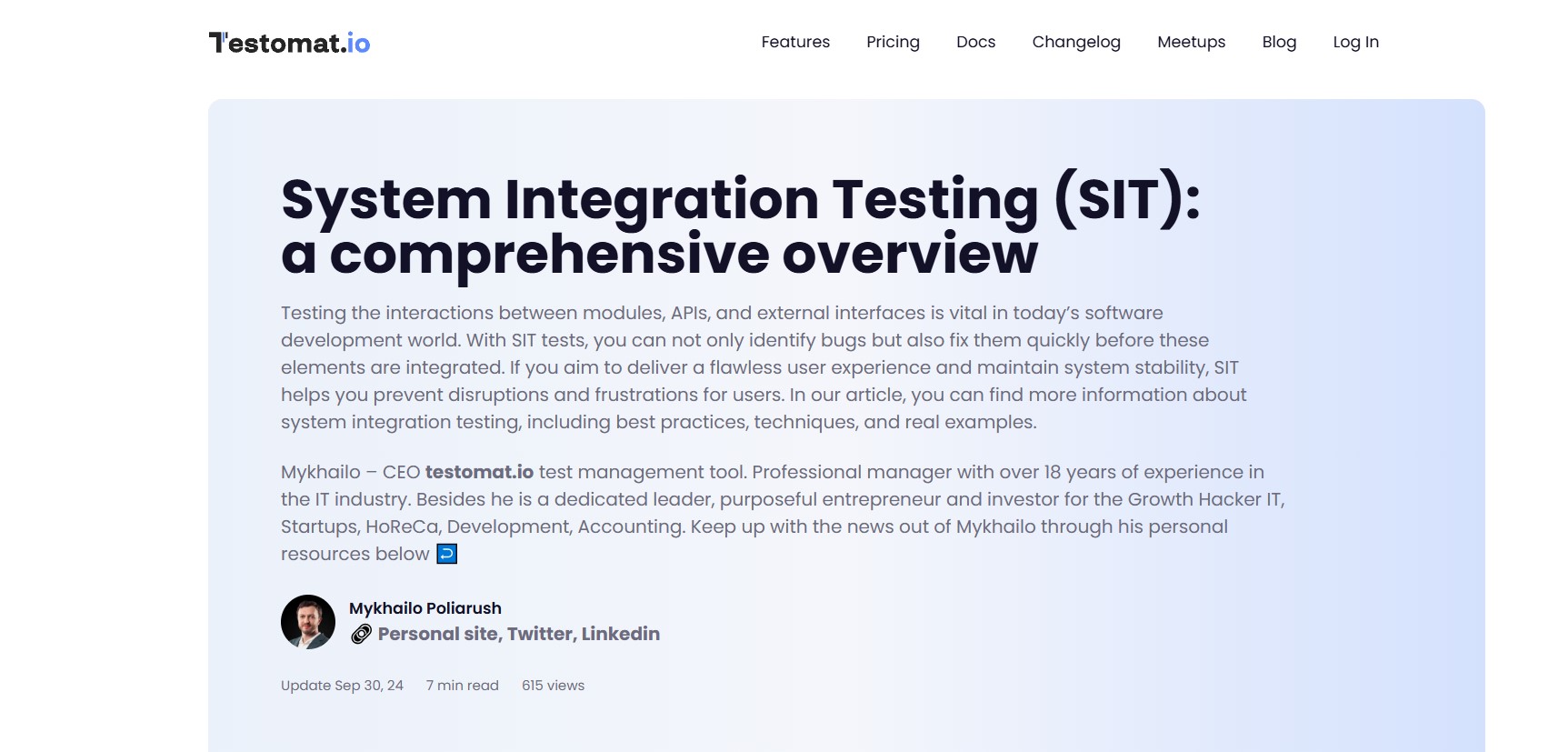Sanity Testing: Tips and Tricks to Ensure Software Quality

Strong 8k brings an ultra-HD IPTV experience to your living room and your pocket.
In today’s fast-paced development environment, ensuring the quality and reliability of software is paramount. One crucial but often overlooked aspect of quality assurance is sanity testing. Although it’s not as comprehensive as full regression testing or system testing, sanity testing plays a vital role in validating that the core functionalities of an application are working after minor changes. Whether you're a developer, QA engineer, or project manager, understanding and effectively implementing sanity testing can save time, resources, and help avoid the deployment of faulty software.
This article will dive deep into the world of sanity testing, exploring what it is, why it’s essential, and how you can implement it effectively in your testing process. We’ll also look at some practical tips, tools, and tricks for ensuring your software quality with the help of sanity testing.
### What is Sanity Testing?
Sanity testing is a subset of regression testing that focuses on verifying the basic functionalities of an application after receiving minor updates, such as bug fixes or small code changes. Its primary goal is to determine whether the changes made to the software break any of the essential features or if the system is still stable enough to proceed with more detailed testing.
Unlike a full regression test, which checks the entire system for any issues, **sanity testing** is quick and shallow. It doesn’t aim to exhaustively check all components of the application; instead, it verifies that the key functionalities are intact. For example, if a bug fix was applied to a login feature, a **sanity test** might check if the login screen now works as expected without checking other features of the application.
### Why is Sanity Testing Important?
1. **Saves Time and Resources**
Sanity testing ensures that the most crucial features of an application are functioning correctly after small changes. By focusing on core features, testers can identify any immediate issues quickly, saving both time and resources. Instead of wasting valuable time running extensive tests on an application that might still be fundamentally broken, sanity testing lets you focus on areas that matter most.
2. **Improves the Quality of Software**
By regularly performing sanity tests after each change, you help identify issues early in the development cycle. This contributes to better software quality and ensures that small updates do not negatively impact the application’s primary features.
3. **Reduces the Risk of Critical Failures**
Even small code changes can introduce new bugs. A **sanity test** quickly identifies any problems in the most important aspects of the software before moving on to more in-depth testing. This helps prevent serious failures in production or before deployment.
### When Should You Perform Sanity Testing?
Sanity testing is typically performed after:
- **Bug fixes**: When a bug is fixed, sanity testing verifies whether the issue is resolved and checks for side effects on the core functionality.
- **New builds**: After a new software build or patch is deployed, sanity testing ensures that the fundamental aspects are not broken.
- **Small updates**: Minor updates to an application that should not affect the entire system need sanity tests to ensure no core feature was unintentionally broken.
### How to Implement Sanity Testing?
To implement **sanity testing** successfully, here are some key steps you can follow:
1. **Identify Core Features**
The first step in sanity testing is identifying which features are critical to the application. These are the functions that need to work flawlessly to ensure the application is usable. Once identified, these features will be the main focus of your **sanity test**.
2. **Test a Sample of Changes**
Instead of running full regression tests, focus on the parts of the application that have been modified. If the changes are limited to specific modules, test only those areas to make sure they’re functioning as expected. This targeted approach helps speed up the testing process.
3. **Keep it Simple**
Sanity tests are typically simple and should not involve detailed, comprehensive scenarios. The goal is to confirm that the primary features are operational, not to run an exhaustive set of test cases.
4. **Automate Where Possible**
If your team uses automated testing tools, you can incorporate **sanity tests** into your automation framework. This saves time and ensures consistency, especially when running sanity tests across multiple builds or releases.
5. **Document the Results**
Always document the results of your sanity tests, even if the tests pass. This documentation can be useful in case issues arise later and can serve as a quick reference for future sanity tests.
### Tools to Help with Sanity Testing
There are several tools that can streamline and automate the **sanity testing** process, ensuring quicker and more reliable results. Some of the most popular tools include:
1. **Testomat.io**
Testomat.io is a comprehensive test management platform that can help streamline sanity testing by providing an easy-to-use interface to track and manage tests, including sanity checks. With its intuitive dashboards and reporting features, it ensures that all essential features are verified quickly and efficiently.
2. **Selenium**
Selenium is a powerful tool for automating web applications. It can be used for automating sanity tests for web-based applications, allowing testers to run rapid checks on core functionality after changes.
3. **JUnit**
JUnit is one of the most commonly used testing frameworks in Java. It can be easily integrated into your CI/CD pipeline to automate sanity testing and ensure your basic functionalities are intact with every build.
4. **TestComplete**
TestComplete offers a range of automated testing features and can help quickly execute sanity tests across various platforms. It supports a wide variety of scripting languages, making it easy to implement tests even for complex applications.
5. **Appium**
Appium is an open-source tool for automating mobile application testing. It can be effectively used to automate sanity tests for mobile apps, ensuring that key features continue to function smoothly after updates.
### Best Practices for Sanity Testing
1. **Perform Regular Sanity Tests**
It’s important to incorporate sanity testing into your regular testing cycle. By conducting sanity tests frequently, especially after every code change or update, you can quickly identify issues before they become major problems.
2. **Focus on User-Facing Features**
In most cases, sanity tests should focus on user-facing features, such as login screens, payment systems, and other critical functionalities. Ensuring that these areas work correctly is crucial for maintaining user trust and satisfaction.
3. **Keep Test Cases Concise**
Sanity tests are not meant to be comprehensive. Instead, focus on the critical path and ensure that core features are working. Avoid overcomplicating the tests with unnecessary checks.
4. **Ensure Clear Communication with the Team**
Keep your development and testing teams informed about the goals and scope of sanity testing. Clear communication ensures that everyone is aligned on what’s being tested and why it’s important.
5. **Use Sanity Testing for Continuous Integration**
Integrate **sanity testing** into your continuous integration (CI) pipeline to ensure that every build or update is verified automatically. This reduces manual effort and accelerates the testing process.
### Conclusion
Sanity testing is a simple yet powerful practice that ensures the core functionality of an application remains intact after changes. By focusing on the critical features and performing targeted tests, **sanity testing** saves time and resources while helping maintain the quality of software. Implementing best practices and using the right tools can significantly enhance the effectiveness of your sanity testing process.
If you’re looking for a reliable test management platform, **Testomat.io** is an excellent choice. It helps streamline the testing process, ensuring that every test, including sanity tests, is tracked, managed, and reported efficiently.
To learn more about sanity testing and how it can help you ensure better software quality, visit the [Testomat blog on sanity testing](https://testomat.io/blog/sanity-testing-tips-and-tricks-to-ensure-software-quality/).
Note: IndiBlogHub features both user-submitted and editorial content. We do not verify third-party contributions. Read our Disclaimer and Privacy Policyfor details.







